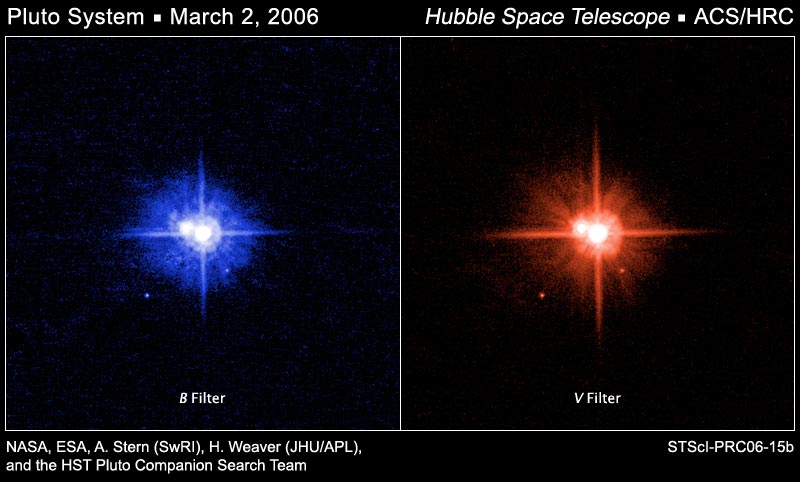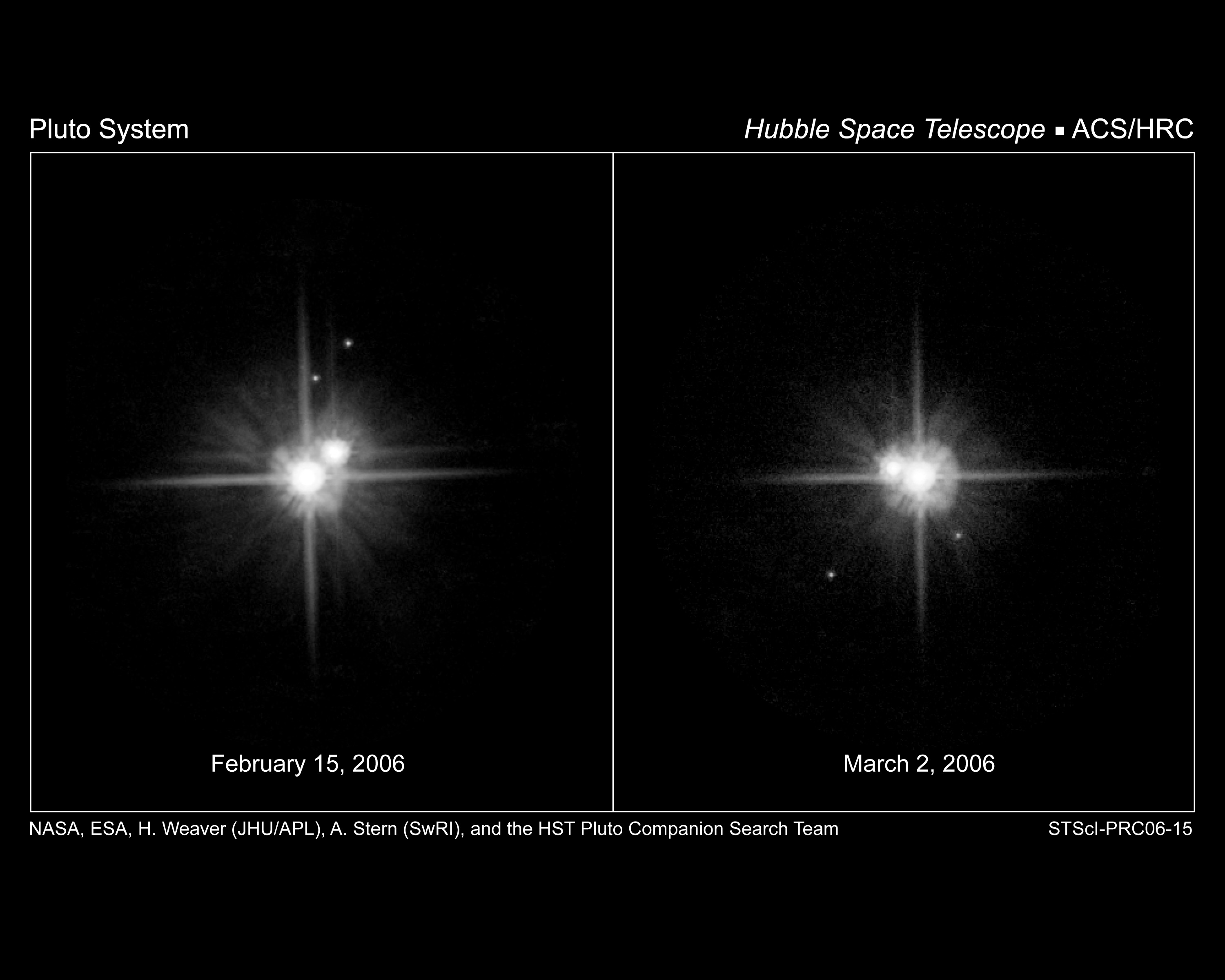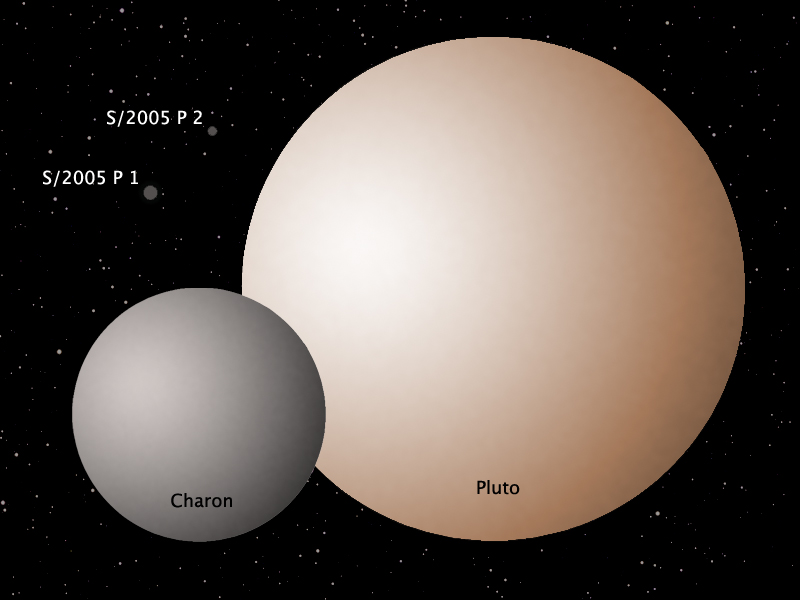Press Release
A Colorful Discovery about Pluto’s Moons
Finding Supports Theory that Single Collision Created Ninth Planet's Three Satellites
Using new Hubble Space Telescope observations, a research team led by Dr. Hal Weaver of The Johns Hopkins University Applied Physics Laboratory and Dr. Alan Stern of Southwest Research Institute has found that Pluto's three moons are essentially the same color — boosting the theory that the Pluto system formed in a single, giant collision.
Publishing their findings in an International Astronomical Union Circular (No. 8686), the team determined that Pluto's two "new" satellites, discovered in May 2005 and provisionally called S/2005 P 1 and S/2005 P 2, have identical colors to one another and are essentially the same, neutral color as Charon, Pluto's large moon discovered in 1978.
All three satellites have surfaces that reflect sunlight with equal efficiency at all wavelengths, which means they have the same color as the Sun or Earth's moon. In contrast, Pluto has more of a reddish hue.
The new observations were obtained March 2 with the high-resolution channel of the Hubble's Advanced Camera for Surveys. The team determined the bodies' colors by comparing the brightness of Pluto and each moon in images taken through a blue filter with those taken through a green/red filter. The images are available on the Hubble Web site at http://hubblesite.org/newscenter/newsdesk/archive/releases/2006/15/image/.
"The high quality of the new data leaves little doubt that the hemispheres of P1 and P2 that we observed have essentially identical, neutral colors," says Weaver.


